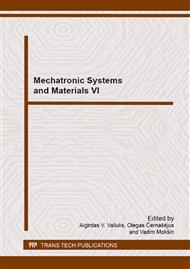p.571
p.577
p.583
p.589
p.595
p.603
p.609
p.615
p.621
Influence of Lead Angle Variation on the Coated Carbide Inserts Wear when Milling CGI and Modeling by Artificial Neural Networks and Regression Analysis Method
Abstract:
The aim of this research is to investigate the influence of lead angle, cutting speed and the maximum chip thickness on tool wear in face milling process of compacted graphite iron. Tool failure modes and wear mechanisms for all cutting tools were examined in respect of various cutting parameters and were evaluated on the base of the flank wear. SEM analyses of the cutting inserts were performed and experimental results have been modelled with artificial neural networks (ANN) and regression analysis. A comparison of ANN model with regression model is also carried out. Predictive ANN model is found to be capable of better predictions for flank wear within the range used in network training. The R2 values for testing data were calculated as 0.992 for ANN and 0.998 for regression analysis, respectively. This study is considered to be helpful in predicting the wear mechanism of the coated carbide insert in the machining of compacted graphite iron.
Info:
Periodical:
Pages:
595-602
Citation:
Online since:
January 2015
Authors:
Price:
Сopyright:
© 2015 Trans Tech Publications Ltd. All Rights Reserved
Share:
Citation:


